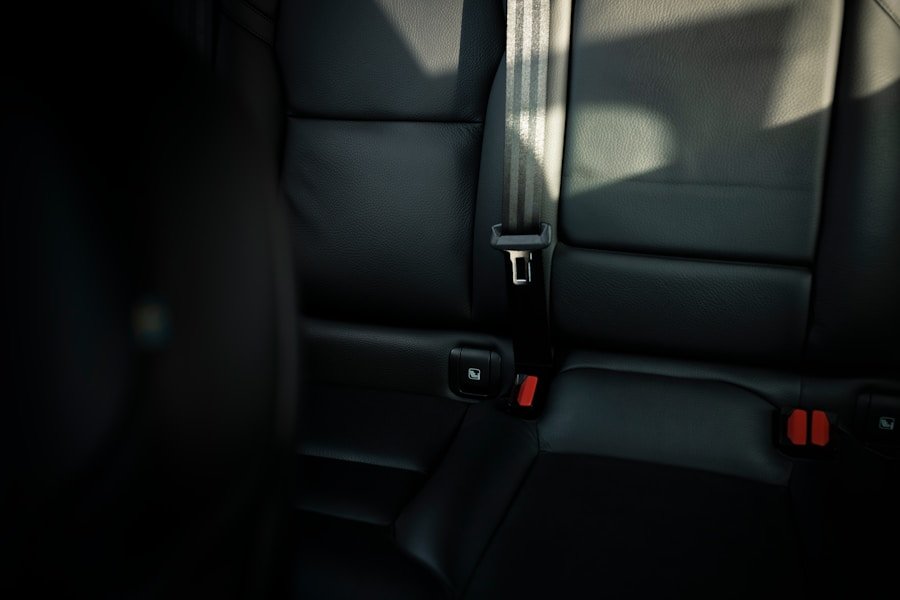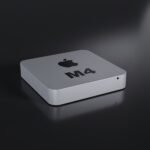When venturing into the great outdoors, a dependable power source is crucial for keeping devices charged and maintaining communication with the outside world. Solar chargers offer a reliable solution, leveraging the sun’s energy to power devices, thereby providing an eco-friendly and sustainable alternative for outdoor enthusiasts. One of the primary advantages of utilizing solar chargers for camping is their ability to provide a renewable and clean energy source, thereby minimizing one’s carbon footprint while enjoying nature.
Furthermore, solar chargers are portable, lightweight, and easy to set up at campsites, allowing users to charge devices without relying on traditional power sources, thus granting the freedom to explore off-grid locations without worrying about battery depletion. Another significant benefit of employing solar chargers for camping is their cost-effectiveness in the long run. Although the initial investment may be higher than traditional chargers, solar chargers can yield long-term savings by reducing reliance on disposable batteries and expensive fuel-powered generators.
By harnessing the sun’s energy for free, solar chargers enable users to charge devices without constantly purchasing and replacing batteries or fuel, resulting in both financial savings and a reduction in waste and pollution, making them a sustainable and environmentally friendly choice for camping.
Key Takeaways
- Solar chargers are a convenient and eco-friendly way to power your camping gear.
- Solar chargers work by converting sunlight into electricity to charge your devices.
- When choosing a solar charger, look for features like portability, durability, and fast charging capabilities.
- Some top solar chargers for camping include the Goal Zero Nomad 7 Plus, Anker 21W Dual USB Solar Charger, and the BigBlue 28W Solar Charger.
- To effectively use solar chargers, position them in direct sunlight and consider using a power bank for storing energy.
How Solar Chargers Work
Solar chargers work by converting sunlight into electricity through photovoltaic cells, also known as solar panels. These panels are made up of multiple silicon cells that absorb sunlight and convert it into direct current (DC) electricity. The electricity is then passed through a charge controller, which regulates the voltage and current to prevent overcharging and damage to your devices.
From there, the electricity is stored in a rechargeable battery, such as a lithium-ion or lead-acid battery, which can then be used to power up your devices through a USB port or other compatible outlets. The process of converting sunlight into electricity is made possible by the photovoltaic effect, which occurs when photons from the sun’s rays strike the silicon cells in the solar panel, causing electrons to be knocked loose from their atoms. This creates an electric current that can be harnessed and used to power up your devices.
The amount of electricity generated by a solar charger depends on factors such as the size and efficiency of the solar panels, the angle and position of the panels in relation to the sun, and the intensity of sunlight. Overall, solar chargers work by harnessing the sun’s energy and converting it into a usable form of electricity to keep your devices charged while camping.
Top Features to Look for in a Solar Charger
When choosing a solar charger for camping, there are several key features to consider to ensure you get the best performance and reliability. One important feature to look for is the efficiency of the solar panels. Higher efficiency panels will generate more electricity from the same amount of sunlight, allowing you to charge your devices faster and more effectively.
Additionally, look for a solar charger with a durable and weather-resistant design, as it will need to withstand outdoor conditions such as rain, wind, and extreme temperatures while camping. Another important feature to consider is the capacity of the rechargeable battery in the solar charger. A larger capacity battery will allow you to store more electricity for later use, ensuring that you have enough power to keep your devices charged even when sunlight is limited.
Additionally, look for a solar charger with multiple charging ports and compatibility with a wide range of devices, so you can charge multiple devices at once and easily connect your smartphone, tablet, camera, or other electronics. Finally, consider the size and weight of the solar charger, as well as any additional accessories such as mounting brackets or carrying cases, to ensure that it is portable and convenient for camping trips.
The Best Solar Chargers for Camping
There are many different solar chargers on the market designed specifically for camping and outdoor use. One top-rated option is the Goal Zero Nomad 7 Plus Solar Panel, which features high-efficiency monocrystalline solar panels that can charge USB and 12V devices directly from the sun. The Nomad 7 Plus also includes a built-in kickstand and weatherproof design, making it easy to set up and use in various outdoor conditions.
Another popular choice is the Anker 21W Dual USB Solar Charger, which offers fast charging speeds and a compact, lightweight design that is ideal for backpacking and camping trips. For those looking for a more versatile option, the BigBlue 28W Solar Charger is a great choice with three USB ports and a foldable design for easy storage and transport. The BigBlue charger also features a built-in ammeter to monitor charging progress and an included micro-USB cable for added convenience.
Other top-rated solar chargers for camping include the RAVPower 24W Solar Panel with three USB ports and a durable canvas design, as well as the Nekteck 21W Solar Charger with high-efficiency panels and a rugged construction for outdoor use.
Comparing Different Solar Charger Models
When comparing different solar charger models for camping, it’s important to consider factors such as efficiency, capacity, durability, and portability to find the best option for your needs. For example, some solar chargers may have higher efficiency panels that can generate more electricity from sunlight, while others may have larger capacity batteries for storing more power. Additionally, some models may be more durable and weather-resistant than others, making them better suited for outdoor use in harsh conditions.
Another factor to consider when comparing solar charger models is their portability and ease of use. Some models may be lightweight and compact with foldable designs for easy storage and transport, while others may be larger and heavier with additional features such as built-in kickstands or mounting brackets. It’s also important to consider the number of charging ports and compatibility with different devices when comparing solar charger models, as well as any additional accessories or features that may enhance their performance and convenience while camping.
Tips for Using Solar Chargers Effectively
To get the most out of your solar charger while camping, there are several tips and best practices to keep in mind. First, it’s important to position your solar panels in direct sunlight for maximum efficiency and charging speed. This means setting up your solar charger in an open area with unobstructed sunlight and adjusting the angle of the panels throughout the day to track the sun’s movement.
Additionally, keeping your solar panels clean and free from debris such as dirt or leaves will help maintain their efficiency and performance while camping. Another tip for using solar chargers effectively is to use them during peak sunlight hours for optimal charging results. This typically occurs during midday when the sun is highest in the sky and provides the most intense sunlight for generating electricity.
It’s also important to monitor your charging progress and adjust your setup as needed to ensure that your devices are receiving a steady flow of power from your solar charger. Finally, consider using energy-efficient devices and minimizing power consumption while camping to make the most of your solar charger’s capabilities and extend its battery life.
The Future of Solar Charging Technology
As technology continues to advance, so does the future of solar charging technology for camping and outdoor use. One exciting development in this field is the integration of new materials and designs that improve the efficiency and performance of solar panels, allowing them to generate more electricity from sunlight in smaller and lighter packages. This could lead to more portable and powerful solar chargers that are easier to carry and use while camping.
Another trend in the future of solar charging technology is the development of smart charging systems that can optimize energy production and storage based on environmental conditions and user preferences. This could include features such as automatic angle adjustment for solar panels, real-time monitoring of charging progress, and intelligent power management to maximize efficiency and convenience while camping. Additionally, advancements in battery technology could lead to longer-lasting and higher-capacity rechargeable batteries for storing more power from solar chargers.
Overall, the future of solar charging technology looks promising for camping enthusiasts, with continued innovation and improvements in efficiency, portability, and convenience. As more people seek sustainable and eco-friendly power solutions for outdoor activities, solar chargers are likely to become even more popular and accessible in the years to come. In conclusion, harnessing the sun’s energy with solar chargers is an excellent way to keep your devices charged while camping in an eco-friendly and sustainable manner.
By understanding how solar chargers work and what features to look for in a quality model, you can choose the best option for your needs and make the most of this renewable energy source. With top-rated solar chargers available on the market and tips for using them effectively while camping, you can stay connected and powered up during your outdoor adventures. And with ongoing advancements in solar charging technology, the future looks bright for even more efficient and convenient options for camping enthusiasts.
FAQs
What is a solar charger?
A solar charger is a device that uses solar energy to convert it into electrical power, which can then be used to charge electronic devices such as smartphones, tablets, and other camping gear.
How do solar chargers work?
Solar chargers work by using photovoltaic cells to capture sunlight and convert it into electricity. This electricity is then stored in a battery or used directly to charge electronic devices.
What are the benefits of using a solar charger for camping?
Using a solar charger for camping allows campers to harness the sun’s energy to power their electronic devices, reducing the need for traditional power sources and minimizing their environmental impact.
What are the top solar chargers for camping gear?
The top solar chargers for camping gear include brands such as Goal Zero, Anker, and RAVPower, which offer portable and efficient solar chargers designed specifically for outdoor use.
What should I consider when choosing a solar charger for camping?
When choosing a solar charger for camping, it’s important to consider factors such as the charger’s power output, portability, durability, and compatibility with your camping gear and electronic devices.













